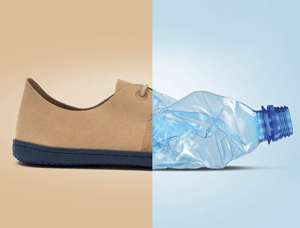Sea glass, with its smooth, frosted, and vibrant appearance never ceases to capture the attention beach goers. You would never think this mysterious beauty was once discarded trash. The “trash” in this case would be glass of any kind; bottles, jars, windows perhaps, etc. Before the environmental movements in the 1960’s, trash dumps were often left exposed to the elements. As much of this trash was left near different types of bodies of water glass (amongst other things) would be carried away. After this, glass would undergo an incredible transformation from natural causes. Waves would sweep away glass fragments as they would slide and roll against the gritty sand underwater. This action caused the sharp edges to become round and soft and eventually creates that clear or frosted look. The environmental impact of sea glass is a double edged sword as it has both positive and negative effects. One the one hand, sea glass can contribute to other litter found on or around beach areas. It can also be seen as a pollutant because the different glass particles can break down into nano or micro-sized glass/materials. The size of these particles can easily get mixed in with our water and food cycle. This can possibly start a movement through the food chain so to speak. The micro particles could contaminate the soil ecosystem, effecting plant life. Then that can contribute to having an impact on different sea creatures which could eventually make its way to be human food. That being said, there currently seems to be a decline in sea glass, as single use plastic materials are starting to take over. There has been a boom in single use plastics an alternative to using glass bottles or other glass materials. This might cause a “shortage” or make it harder to find sea glass in the future which can lead to yet another environmental impact with micro plastics. That being said, there are some positive sides to sea glass. The biggest one being glass can always be recycled! Sea glass serves as a natural, recycled material, creating a wide variety of different uses for it. You will find that sea glass tends to be most popular in the production of jewelry. When jewelers choose to use sea glass they are replacing using new, raw material, that would probably be more harmful towards the environment. This can also reduce the demand for other raw materials such as metals and gemstones. Another use for sea glass can be for decoration or even used in landscaping projects to replace pebbles, gravel, dirt, etc. This also helps reduce the need for raw materials that are not considered recyclable. Sea glass can be have a lot of different uses depending on how it is managed and or used for. Overall, although it has its negative aspects, the positives seem to outweigh them as sea glass is a beautiful recycled material that people love to pick up and keep for themselves, which in turn helps pick up litter!
Citations:
Weeden, L. (2023, September 28). Sea glass, a treasure formed from trash, is on the decline as single-use plastic takes over. The Conversation. https://theconversation.com/sea-glass-a-treasure-formed-from-trash-is-on-the-decline-as-single-use-plastic-takes-over-212666
What is the Environmental Impact of Sea Glass? (n.d.). Dejavudesigns.com. Retrieved February 17, 2024, from https://dejavudesigns.com/learn-about-sea-glass/what-is-the-environmental-impact-of-sea-glass/
Kumari, S., Agarwal, S., & Khan, S. (2022). Micro/nano glass pollution as an emerging pollutant in near future. Journal of Hazardous Materials Advances, 6, 100063. https://doi.org/10.1016/j.hazadv.2022.100063
